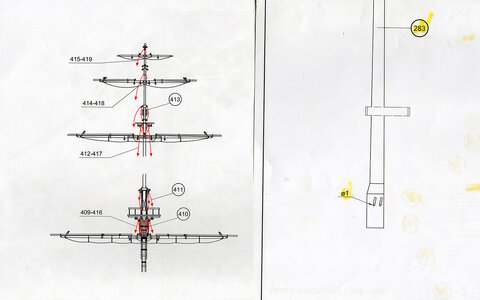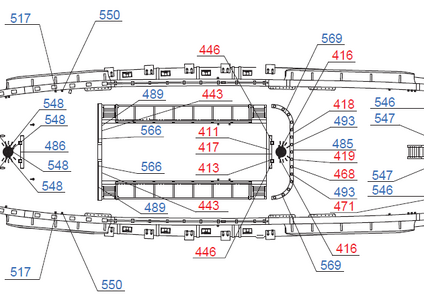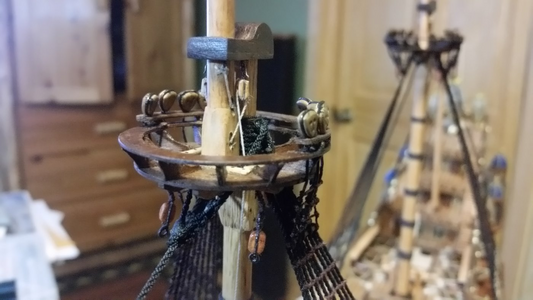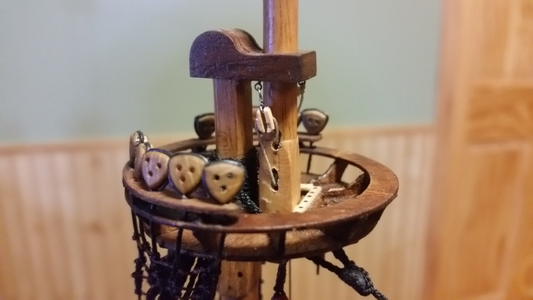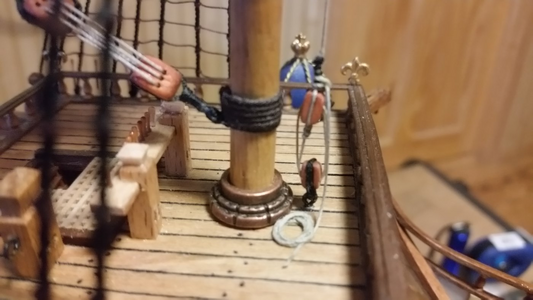Kurt's description may be spot on. Is this the Montanes (74) 1794?
Another thought ----- 411 and 413 look to be ties (top ropes) which were used in the 17th century. One end of the ties was seized to the yard at the slings . The other end was taken through the sheave in the hounds of the mast from forward to aft, led down abaft the mast, passed through the athwartship hole in a rams head block then back up and through the sheave on the other side of the mast and seized to to the yard close to the standing part of the tie at the slings. It was of such a length as to allow the yard to be lowered to the deck. There is more detail and drawings on page 63 of The Masting and Rigging by James Lees but maybe the Spanish did things completely differently than the British. The problem is that your drawing shows both ties and jeers. The jeers took the place of the ties on British ships before the end of the 17th century and were used in conjunction with slings. All in all, I think the drawing you posted is not representative of how jeers and the slings would have been rigged in 1794 when Montanes was launched. Looking at the sketches I cannot tell if there are slings present but there are ties (top ropes) that I do not believe should be there as there are already jeers present.
You may want to contact the Naval Museum in Madrid for more accurate information.
Allan

